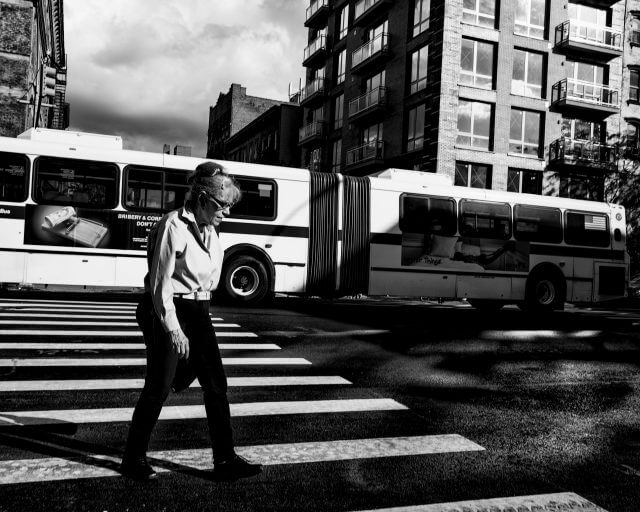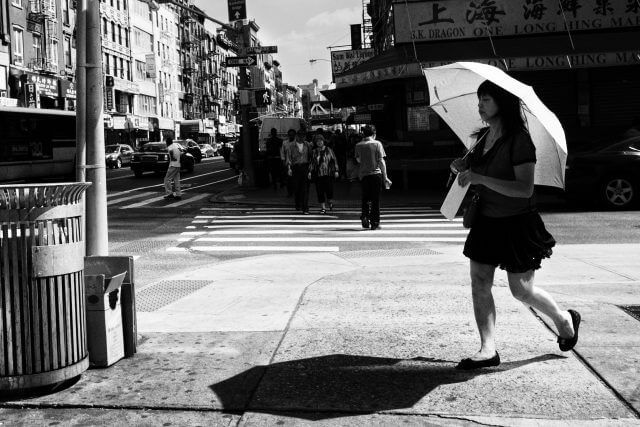“How do I become a better photographer?” This is a question that garners a steady flood of responses whenever it's asked, as everyone seems to have some insight into this open ended query. From purchasing a new camera to going on vacation to enrolling in classes, you’re going to be inundated with suggestions good and bad, brilliant and ridiculous. Sometimes you’ll even have your question answered with other questions or with advice that seems so incredulously vague that it only serves to create an infinite loop in your thought process.
I don’t claim to have the perfect solution to any of this, but in keeping with my philosophy of keeping things simple, I’d like to address the question of how to become a better photographer by offering a practical suggestion that nearly everyone can wrap their brain around.
Go for a walk.

Gear You Will Need
You don’t need much for this exercise — just your favorite camera/lens combo and a memory card (and maybe an extra battery).
Walk to Sharpen Your Eye
Photographers tend to be destination-focused when we head out with our cameras; we plan to shoot at the park, at the beach, at some specific event — whatever it is and wherever it is becomes our singular focus. But what about the time and space between leaving home and reaching our destination? There’s a lot of stuff in between there that gets overlooked in our rush to get to wherever we’re going.
This time, don’t worry so much about where you’re going. Just go out and walk and make it a point to pay closer attention to things you have probably seen dozens of times but didn’t stop to appreciate. Adopt the mindset of a tourist and be curious. Don’t overthink what you’re doing. Don’t limit yourself to a certain type of subject; shoot everything that piques your interest. Take your shot without fretting too much over composition and exposure; this isn’t an exercise aimed at perfecting technical skills.
The primary benefit of this exercise is that it will sharpen your eye, improve your vision. When we hear praised being heaped upon a photographer, it’s usually something along the lines of, “She’s got a great eye!” Vision, in its photography-related connotation, is the key element in developing and defining your own style. By taking the time to stroll through your neighborhood (or anywhere) absent the pressures of preconceived notions about what should be capturing, you’re free to work in a more spontaneous manner. This spontaneity will ultimately reveal who you are — or want to be — as a photographer.
*Extra: For a greater challenge, turn off your camera's rear LCD while you're shooting. You will have to learn to trust your instincts.

Discover Your Style
After you’ve completed your walk, transfer all your images to your computer. Keep them all! This isn’t a curating process, so don’t worry about trying to judge which ones are better than others. Instead, look for patterns in what you photographed — textures, unique light and shadows, faces, candid moments, architecture — and ask yourself what was it that drew you to certain subjects more than others. Then look for similarities in the way you photographed those subjects. When you find patterns that you like, lock them into your brain and repeat them next time you’re out shooting.
You will see your own style materializing right before your eyes.





3 Comments
“Snap”! Jason, I have a small cam that I generally take with me, when I am out walking with my dog. Got into the habit, after missing a few really great opportunities, for lack of a camera. And you are absolutely right – it is amazing how often you see something that’s worth trying to capture when you have a camera on hand. Just knowing it’s there sets my mind thinking in terms of “looking”. It’s interesting, because we generally walk the same streets – but one day there’s something worth photographing and the next day perhaps not – what’s there to see may not have changed, but how I look at it may have altered – and the “perhaps not” days don’t eliminate the “worth photographing” ones, either.
Agree with you Pete -talking the camera on dog walks is essential. I tried to vary the dog walk routes.Between picture taking and dog checking the “sniff mail” have to admit the “exercise” component was sometimes lacking, but I found some good pictures. When you are walking you eyes are free to roam around the environment. They are not focuses on the road ahead. I have some interesting images of our local streets, parks and walkways in all weathers.
I love the suggestion to keep every picture… makes sense !